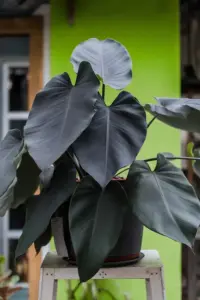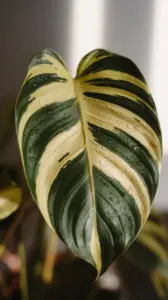Biological Features of Calathea Ornata
Calathea Ornata, also known as the Pinstripe Plant, showcases unique characteristics. This plant features elongated leaves with striking patterns. The leaf veins appear in a beautiful shade of pink against a dark green background. The distinct pinstripe design not only adds aesthetic appeal but also attracts collectors.
Size and Growth Habit
Typically, Calathea Ornata grows to about 24 inches in height. Its spread can reach 18 inches when well cared for. The growth habit is upright, making it ideal for indoor spaces.
Leaf Structure and Color
The leaves are oval-shaped and can be glossy. Each leaf has a prominent midrib along with pointed tips. Young leaves emerge coiled and unfurl over time, displaying their vibrant patterns. The contrasting colors enhance its overall appearance greatly.
Flowering Characteristics
Although Calathea Ornata predominantly attracts through its foliage, it can produce flowers. However, these flowers are less significant compared to its stunning leaves. When in bloom, the flowers are typically white or purple, adding a subtle touch to its visual appeal.
Environmental Adaptations
This plant thrives in humid environments. High humidity levels promote better growth. Thus, keeping Calathea Ornata in a moisture-rich atmosphere is essential for optimal health.
| Feature | Description |
|---|---|
| Leaf Length | Up to 12 inches |
| Leaf Width | 4-6 inches |
| Growth Habit | Upright and bushy |
| Preferred Light | Indirect sunlight |
| Humidity Preference | High humidity (60%+) |
| Soil Type | Well-draining potting mix |
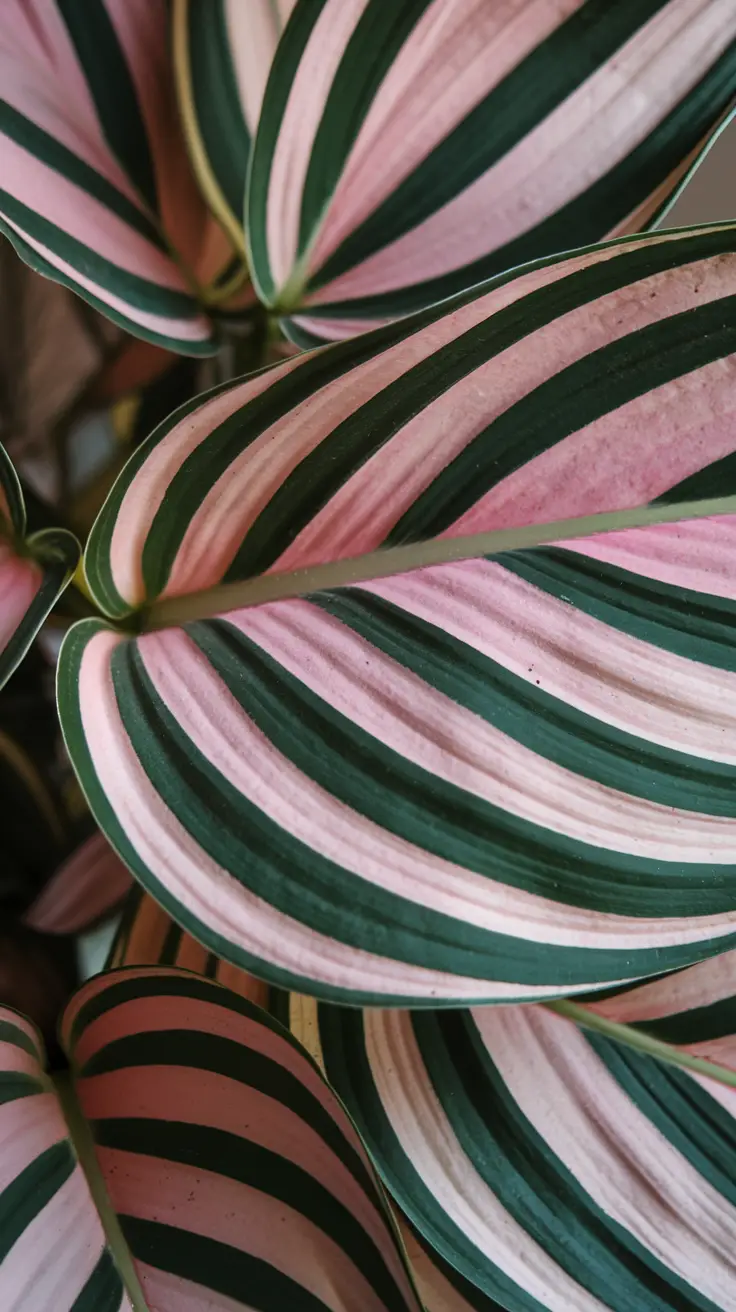
History and Cultural Significance
Calathea Ornata, also known as the Pinstripe Plant, has a rich history and holds significant cultural importance. Native to the tropical regions of South America, particularly in Colombia and Venezuela, it thrives in humid environments. Its stunning leaves feature striking stripes, making it popular among plant enthusiasts.
Cultural Relevance
In several cultures, Calathea plants symbolize prosperity and good fortune. In Brazil, it is believed that keeping Calathea Ornata brings harmony and balance to a household. Additionally, it is often used in interior design to enhance the aesthetic appeal of spaces.
Historical Background
The discovery of Calathea Ornata dates back to the 19th century. Botanists first described the plant, noting its unique patterns and colors. Over time, it gained popularity as a houseplant, appreciated for its air-purifying qualities.
Moreover, Calathea Ornata is a staple in many botanical gardens, admired for its beauty. It draws attention from both horticulturists and casual plant lovers alike. Its slow-growing nature makes it a wonderful addition to any collection.
- The plant’s ability to adapt to low light makes it ideal for indoor spaces.
- Calathea Ornata requires regular moisture to maintain its vibrant appearance.
- It is often used in tropical-themed décor, enhancing the overall atmosphere.
- The unique leaf patterns make it a conversation starter among plant enthusiasts.
As a result, Calathea Ornata continues to be cherished for its beauty and cultural significance. Its presence adds a touch of elegance to any environment.
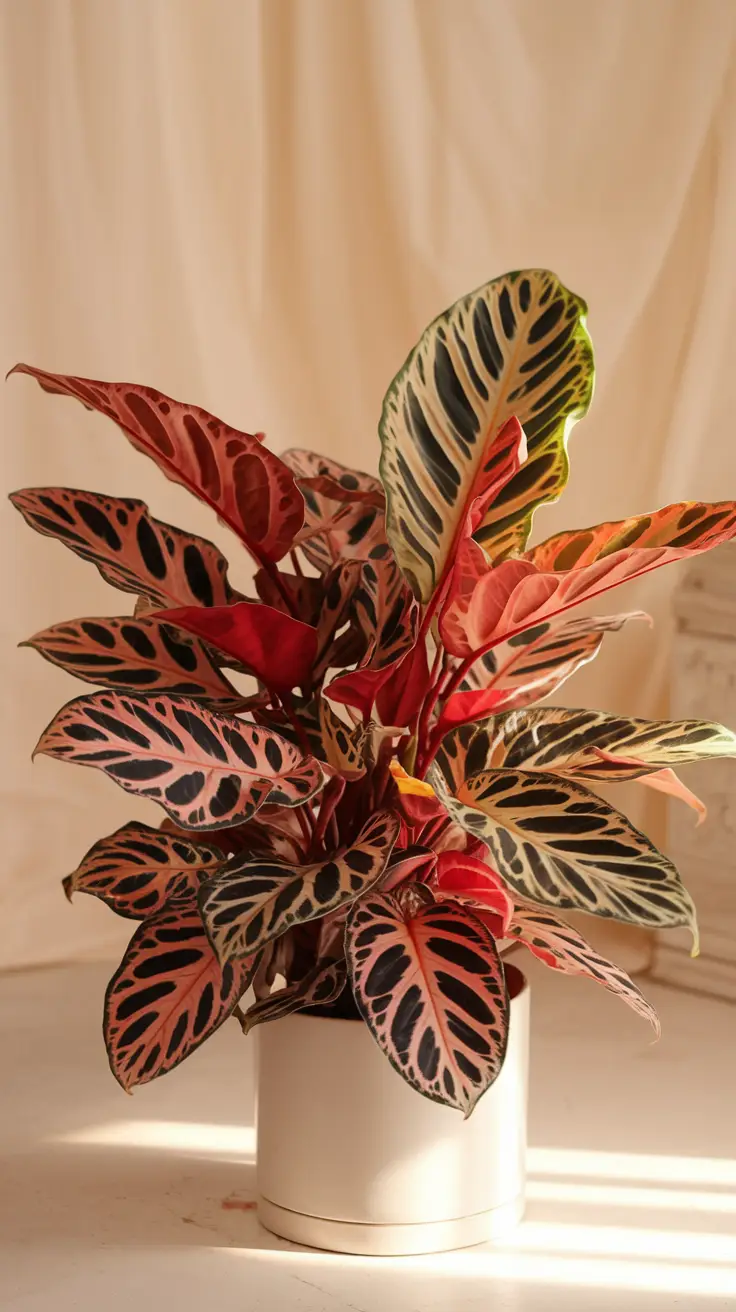
Ideal Growing Conditions for Calathea Ornata
Calathea Ornata, also known for its striking foliage, thrives in specific environmental conditions. To maintain its health, it’s essential to replicate its natural habitat. These plants are native to the tropical regions, requiring particular attention to light, humidity, and temperature.
Light Requirements
Calathea Ornata prefers bright, indirect light. Direct sunlight can scorch its leaves. Therefore, place this plant near a window where it can receive filtered light. Too little light leads to faded colors.
Humidity Levels
Humidity is crucial for the health of Calathea Ornata. This plant requires high humidity, ideally around 50% or higher. Mist the leaves regularly, or use a humidifier to create a suitable environment. Placing the pot on a tray filled with pebbles and water can also help increase humidity through evaporation.
Temperature
The ideal temperature range for Calathea Ornata is between 65°F to 80°F (18°C to 27°C). Protect it from cold drafts and sudden temperature changes. This plant is sensitive to cold, and extreme temperature fluctuations can harm its leaves.
Watering Practices
When it comes to watering, always check the soil’s moisture. Calathea Ornata prefers consistently moist soil but does not tolerate soggy conditions. Use room temperature water and avoid letting the plant sit in water.
| Condition | Ideal | Notes |
|---|---|---|
| Light | Bright, indirect | Avoid direct sunlight |
| Humidity | 50% or higher | Mist regularly; use humidifier |
| Temperature | 65°F – 80°F | Avoid cold drafts |
| Watering | Consistently moist | No soggy soil |
By ensuring these ideal growing conditions are met, Calathea Ornata will flourish and showcase its beautiful foliage. Regular monitoring and adjustments are key to keeping this stunning plant healthy.
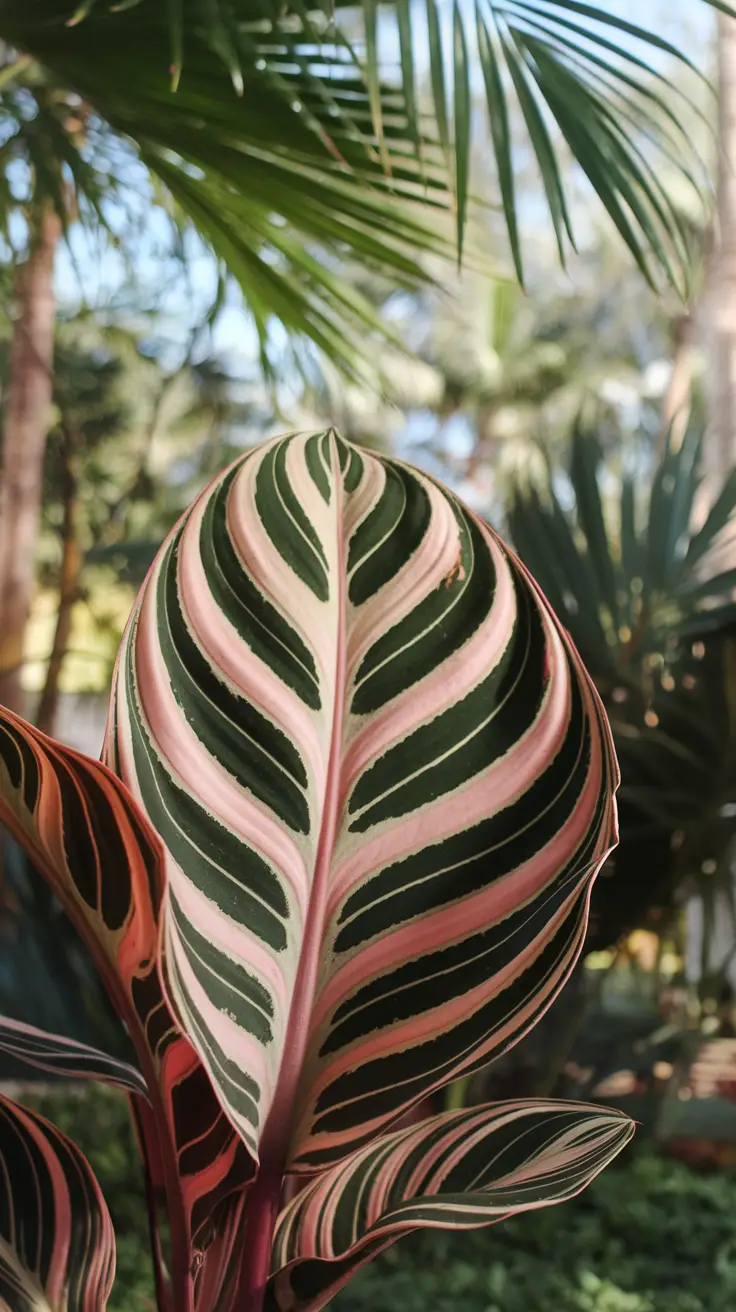
Plant Care and Maintenance
Calathea Ornata thrives in specific conditions, making proper care essential. First, ensure it receives the right amount of light. Indirect sunlight is best, as direct sunlight can scorch its leaves. Inadequate lighting may also cause the vibrant colors to fade. Additionally, maintaining optimal humidity is crucial for Calathea Ornata.
Watering Needs
Water your Calathea regularly but allow the top layer of soil to dry before the next watering. Too much water can lead to root rot, while too little can cause the leaves to curl. During the growing season, which typically occurs in spring and summer, you may need to water more frequently.
Humidity and Temperature
This plant prefers high humidity levels, ideally between 50% to 60%. To maintain humidity, consider the following methods:
- Using a humidifier
- Grouping plants together
- Placing a tray of water near the plant
Calathea Ornata prefers temperatures between 65°F to 80°F (18°C to 27°C). Sudden temperature changes can stress the plant, leading to undesirable effects like leaf damage.
Soil and Fertilization
For optimal growth, use a well-draining potting mix. A mix high in organic matter is ideal, as it retains moisture. Fertilize every 4-6 weeks during spring and summer, using a balanced, water-soluble fertilizer diluted to half strength. Avoid fertilizing during the dormant winter months.
Pest Management
Calathea Ornata can be susceptible to pests like spider mites and aphids. Regularly inspect the plant for signs of infestation. If you notice any pests, act quickly to remove them. You can use insecticidal soap or neem oil for effective treatment.
Repotting
Repot Calathea Ornata every 1-2 years to provide fresh soil and more space. Choose a pot one size larger, ensuring it has drainage holes. After repotting, water thoroughly and allow excess water to drain.
By following these care guidelines, you can maintain the health and vibrancy of your Calathea Ornata. Remember, attention to detail will ensure your plant thrives!
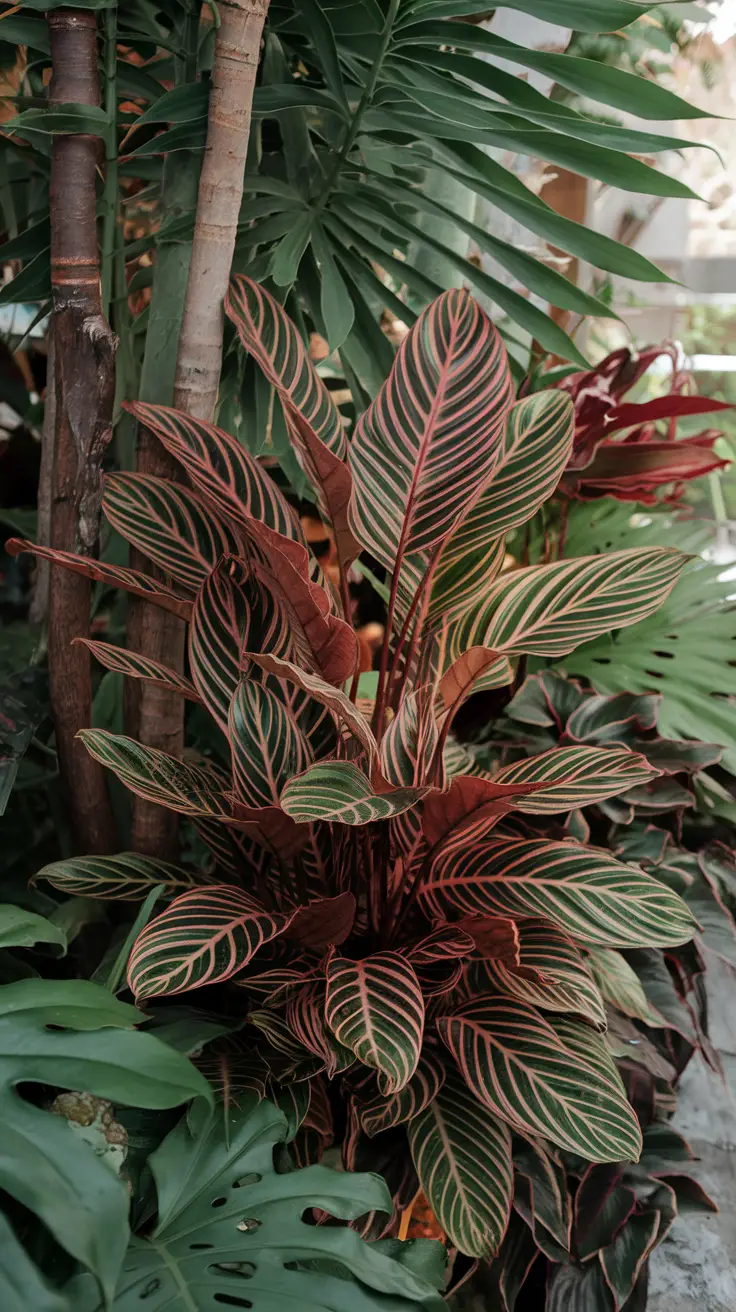
Propagation Techniques for Calathea Ornata
Calathea Ornata, renowned for its stunning leaf patterns, can be propagated through several effective methods. Each technique encourages new growth while showcasing the plant’s beauty. Below are the most common methods used for propagation.
Division Method
One of the simplest ways to propagate Calathea Ornata is by division. Begin this process in spring or early summer when the plant is actively growing. Carefully remove the plant from its pot and gently separate the roots into smaller sections. Ensure that each section has at least one healthy stem and a root system. Replant these divisions in fresh potting mix.
After dividing, water the newly potted sections thoroughly. Keep them in a warm, humid environment while they establish roots. This method allows you to maintain the unique characteristics of Calathea Ornata.
Cutting Method
Another propagation technique involves taking stem cuttings. Choose healthy stems with at least one node. Cut the stem just below the node and place it in water. Ensure the node is submerged but the leaves remain above water. Change the water regularly to keep it fresh.
Once roots form, which typically takes a few weeks, transplant the cutting into soil. This method is an excellent way to expand your collection of Calathea Ornata easily.
Tips for Successful Propagation
Regardless of the method chosen, several tips can help increase your success rate:
- Maintain high humidity levels around the new plants.
- Ensure they receive indirect light, as direct light can damage the leaves.
- Monitor soil moisture closely to prevent over or under-watering.
In summary, propagating Calathea Ornata can be both rewarding and straightforward. By following these methods and tips, you can easily enhance your indoor garden with more of these stunning plants.
Common Problems and Solutions
Calathea Ornata often faces several common issues that can affect its health and appearance. Understanding these challenges can help you keep your plant thriving. Various factors such as light, water, and humidity affect its growth. Below are some of the frequent problems and their solutions.
Pest Infestations
Pests like spider mites and aphids can target Calathea Ornata. Signs include yellowing leaves and webbing. Early detection is crucial. Here are ways to combat pests:
- Regularly inspect leaves under bright indirect light.
- Use insecticidal soap or neem oil.
- Isolate affected plants to prevent spread.
Water Issues
Overwatering or underwatering can lead to various problems in Calathea Ornata. Yellowing leaves often signify overwatering, while browning leaf tips indicate underwatering. To maintain the right balance:
- Water when the top inch of soil feels dry.
- Ensure pots have drainage holes.
- Use room temperature water.
Humidity Needs
This plant thrives in high humidity. Low humidity can cause leaf curling and browning. To improve humidity levels:
- Place a humidifier nearby.
- Group plants together to create a microclimate.
- Use a pebble tray with water.
Light Conditions
Calathea Ornata prefers bright, indirect light. Too much direct sunlight can scorch leaves. Conversely, insufficient light causes slow growth and faded colors. Here are tips for lighting:
- Keep the plant near a north or east-facing window.
- Rotate the pot occasionally for even light exposure.
- Use sheer curtains to diffuse harsh sunlight.
Soil and Fertilization
Using the right soil and fertilization is essential. A well-draining potting mix promotes healthy roots. Fertilize during the growing season, but not excessively. Consider these guidelines:
| Fertilizer Type | Frequency |
|---|---|
| Liquid Fertilizer | Once every 4 weeks |
| Slow-Release Fertilizer | Every 2-3 months |
By addressing these common problems, you can help your Calathea Ornata flourish. Regular care and monitoring play key roles in maintaining its health.
Seasonal Care Adjustments
Calathea Ornata requires specific care adjustments during different seasons to thrive. Understanding these seasonal changes is crucial for maintaining its vibrant leaves. First, consider adjusting watering practices.
Watering Changes
In winter, reduce watering as the plant enters a period of dormancy. Conversely, during spring and summer, increase watering. During this time, your Calathea Ornata becomes more active and will need more moisture.
Humidity Levels
Humidity plays a vital role in the health of Calathea Ornata. In colder months, indoor humidity often drops. Therefore, consider using a humidifier or placing a tray of water nearby. Aim for a humidity level of at least 50%.
Light Requirements
Light requirements also shift seasonally. During the cooler months, provide bright, indirect light. In summer, however, you may want to find a spot that offers filtered light. Avoid harsh, direct sun as it can scorch leaves.
Fertilization
During the growth phase in spring, fertilize every month. Use a balanced liquid fertilizer diluted to half strength. In the fall and winter, stop fertilizing as the plant conserves energy.
- Water less in winter.
- Increase humidity during cold months.
- Adjust light exposure seasonally.
- Fertilize during active growth.
Microclimate Setup Tips
Creating the perfect microclimate for your Calathea Ornata is crucial for its growth and vibrancy. The right environment helps maintain humidity and temperature, essential for this tropical plant. Here are some tips to ensure your Calathea thrives:
Humidity Levels
Calathea plants prefer high humidity levels. Aim for a humidity of at least 50%. To achieve this, consider the following:
- Use a humidifier in the room.
- Place a water tray with pebbles underneath the pot.
- Group multiple plants together to increase humidity.
Temperature Considerations
Calathea Ornata thrives in temperatures between 65°F and 80°F (18°C to 27°C). Avoid temperatures below 60°F (15°C) as they can stress the plant. To maintain proper temperatures, try these suggestions:
- Avoid placing the plant near drafts or heat sources.
- Consider a thermostat to monitor room temperature.
- Close windows during cold nights to prevent chilling.
Lighting Conditions
While Calathea loves bright, indirect light, too much direct sunlight can scorch its leaves. To provide ideal lighting, follow these guidelines:
- Place your Calathea near a window with sheer curtains.
- Rotate the plant regularly for even light exposure.
- Monitor leaf color for signs of adequate lighting.
By following these tips, you can create an ideal microclimate for your Calathea Ornata, ensuring a thriving and healthy plant.
Frequently Asked Questions
Calathea Ornata is a popular houseplant with distinctive leaves. Many people have questions about its care and maintenance. Here are some common inquiries and their answers.
What light does Calathea Ornata need?
This plant prefers indirect sunlight. Bright, direct light can scorch its leaves. Ideally, place it near a window with filtered light.
How often should I water Calathea Ornata?
Watering once a week is usually sufficient. However, the frequency can depend on humidity and temperature. Always check the top inch of soil for dryness before watering.
What humidity level does it require?
Calathea Ornata thrives in high humidity. A range of 50-60% is ideal. You can increase humidity by misting the leaves or using a pebble tray.
Is it safe for pets?
Yes, Calathea Ornata is non-toxic to cats and dogs. This makes it a safe choice for pet owners who want lush greenery indoors.
What should I do if the leaves curl?
If the leaves curl, it might be due to low humidity or inconsistent watering. Try to adjust the environment to provide better conditions for your plant.
Summary and Recommendations
The Calathea Ornata is a stunning plant known for its striking foliage. Its leaves feature intricate patterns of pink and green that enhance any indoor space. As a tropical plant, it requires specific care to thrive. Regular watering is essential, and it’s crucial to keep the soil moist but not soggy. If the leaves start to curl, it typically indicates that it needs more water.
Furthermore, this plant thrives in indirect sunlight. Direct sunlight should be avoided, as it can scorch the leaves. You should also consider maintaining humidity levels around the plant; Calathea Ornata prefers a humid environment. Misting the leaves regularly or using a pebble tray can help achieve this.
In summary, the Calathea Ornata is perfect for plant enthusiasts looking for a beautiful, indoor specimen. With proper care, such as adequate watering and humidity, it can flourish in your home. Monitor its conditions regularly, and you will be rewarded with beautiful, vibrant foliage.




